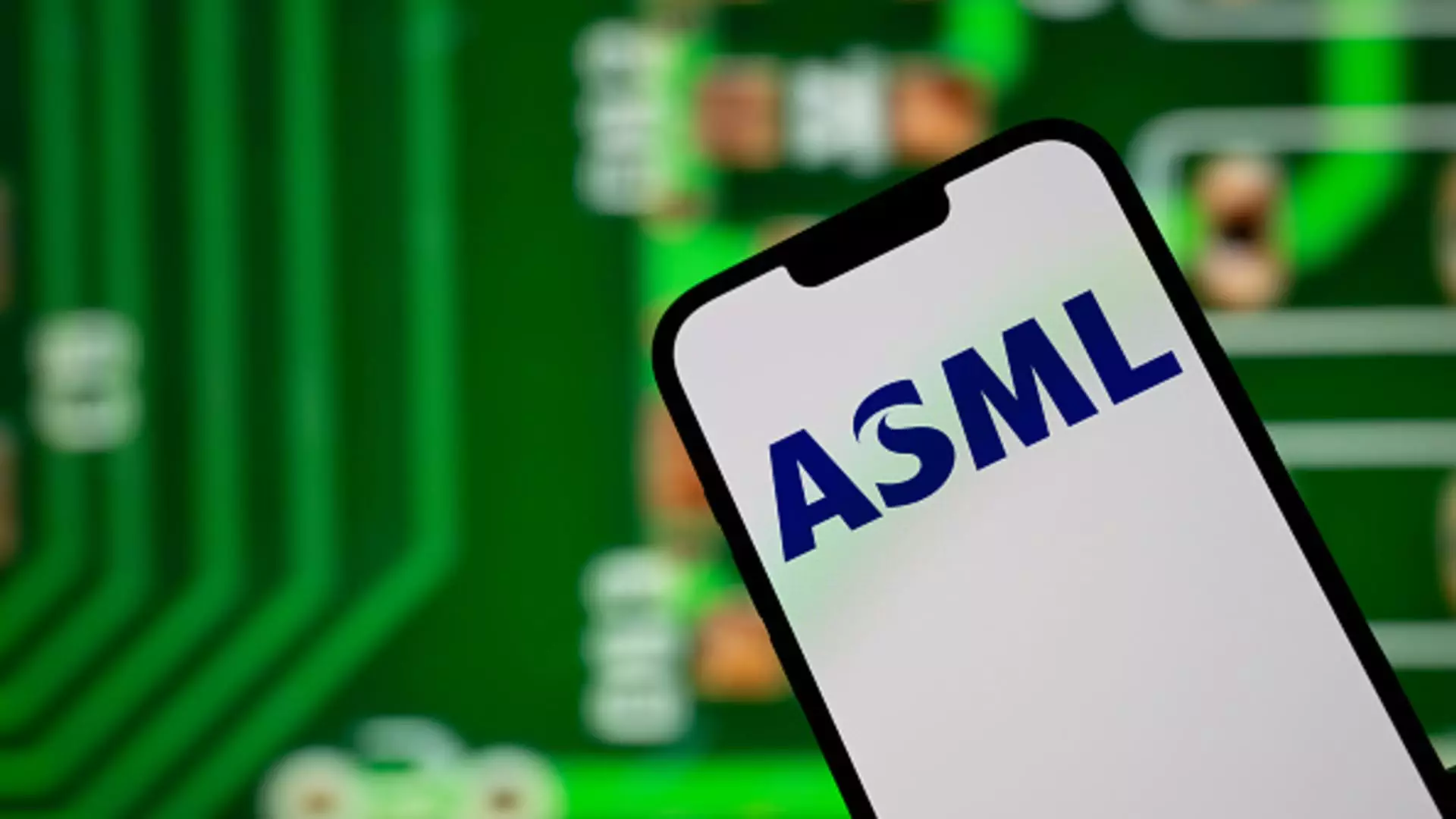ASML, the Dutch semiconductor powerhouse, has recently painted a troubling picture for its future in a landscape riddled with uncertainties. A deeper inspection reveals not just a missed revenue target of approximately 7.74 billion euros, falling short of the predicted 7.8 billion euros, but an intricate web of geopolitical and economic factors swirling around the industry’s core. The reality check is sobering: stakeholders ranging from investors to governments need to pay attention to the nuances behind these seemingly benign numbers.
The Ripple Effects of Geopolitical Instability
At the center of the storm lies the U.S. government’s increasingly erratic tariff policies and trade restrictions. CEO Christophe Fouquet has, with both cautious optimism and pragmatic realism, warned that rising tariffs have introduced a layer of unpredictability that ASML and other tech companies simply cannot afford. While the overall demand for semiconductor technology firmly roots in the AI revolution, the duality of growth amid uncertainty ensures a precarious balancing act for businesses reliant on international sales. The trade policies may serve as a heavy anchor for ASML’s growth aspirations, making analysts suspect it may drift into the lower end of its revenue guidance for 2025, which hovers between 30 to 35 billion euros.
Consumer Electronics vs. National Security: A Tug of War
The tight-knit relationship between consumer electronics and national security emerges as a core theme amidst this chaos. President Donald Trump’s administration has oscillated between creating exemptions for essential technologies and launching convoluted new tariffs aiming to “protect national security.” The latest maneuvering—denying initial exemptions for semiconductors—signals that the industry could face an existential crisis if the U.S. deems essential components too risky for foreign trade. It’s hard to escape the feeling that industries as vital as semiconductors are being dragged into the muck of political posturing.
The Moral Compass of Global Trade
Despite ASML’s known commitment to serving all customers globally—much like its biggest client, TSMC—trade dynamics are forcing companies into uncomfortable choices. The analyst Ben Barringer’s suggestion that ASML may have to “choose sides” is particularly alarming. In an interconnected global market, the dilemma could present moral challenges, causing businesses to weigh profits against ethical implications and international collaboration. The era of viewing multinational corporations as neutral players in geopolitics may be rapidly coming to a close, and with it, the concept of a truly global economy.
The Forecast Ahead: Is it Worth the Risk?
ASML’s projected 2025 revenue now hangs on an uncertain thread, and external analysts are questioning the sustainability of that growth. With bookings for its chipmaking machines falling to 3.94 billion euros—well below the anticipated 4.89 billion—it’s clear that the momentum once enjoyed by ASML faces tangible risks. And while AI and technological strides promise growth, those advancements also come burdened with expectations of rapid tech evolution that many smaller companies simply won’t meet. The whole ecosystem of microprocessors is in flux, riddled with fear of tight supply chains and bewildering legislation.
Realities of Corporate Accountability
Gone are the days where shareholder interests alone dictate corporate strategy. In this new age, stakeholders demand a more nuanced approach to corporate responsibility. As ASML navigates these tumultuous waters, transparency will prove crucial. Shareholders and consumers alike are beginning to scrutinize not just the financial bottom line, but also how companies position themselves in a polarized world. The wait-and-see attitude isn’t a luxury the semiconductor industry can indulge in any longer. The cry for ethics and introspection in business will only grow louder.
The Fragile Balance of Hope Amid Uncertainty
Despite the shadows, a current of optimism remains. The AI sector continues to burgeon, serving as a potential lifeline for ASML’s forecasts. Yet, the looming specter of tariffs creates doubt about how sustainable this optimism is. The once-vibrant semiconductor landscape now bears signs of fragility and fissures—the underlying tensions threaten to fracture a sector critical to the world’s technological framework. In this delicate balance, ASML may find it imperative to establish innovative approaches to sustain demand while adapting to geopolitical nuances.
In an increasingly uncertain landscape, the implications of ASML’s performance ripple far beyond corporate quarterly earnings. They serve as a bellwether for the semiconductor industry’s resilience and adaptability in an age where financial success stands at the crossroads of political maneuvering and tech evolution. The stakes are high, and the lessons learned now will shape the industry’s trajectory for years to come.

Leave a Reply